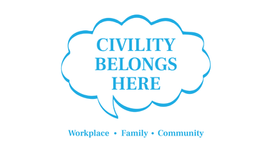- Bill Durkin
- Oct 6, 2017
- 3 min read

In the 1920’s, Henry Ford told the car-buying consumer they could have any color car they wanted as long as it was black. By 1926, he sold 15,000,000 Model T’s and half of them were identical.
Most business leaders at that time drove to work in the same kind of car, drank the same kind of coffee and used the same kind of phone.
In 1927, Ford announced that he was discontinuing the Model T. His factories were shut down and 60,000 workers were laid off.
Customers wanted more choices, and Ford refused to offer them.
Today we can choose from an almost limitless number of alternatives when it comes to what we want to buy or do with our life. You would think our happiness levels would be at an all-time high, but they have never been lower.
The number of choices we have is simply overwhelming for the majority of men, women and children.
Starbucks boasts about having over 87,000 drink combinations. If you prefer to get your beverages at Sonic, they brag about offering 168,000 different options. Want to read a good book or article on leadership? Google the topic and you get 52,000,000 results.
Whether we’re looking to quench our thirst or learn something new, it’s easy to get paralyzed by all the choices available. We can never be sure we’re making the “best” decision when we don’t have time to evaluate all the alternatives. Even if the product we buy is better than what we used to have, it’s hard to be happy with the decision if we worry that our choice was not the absolute best.
Today, most of the people we lead and love are on choice overload when it comes to the decisions they have to make in their personal and professional lives. Science has proven that having too many choices can produce psychological distress and it has a negative impact on the quality of our health, happiness and well-being.
I believe there are simple steps we can take to win the war against too many choices, but it does take effort.
Are you ready to help yourself and others be happier with the choices we make?
Here are some practices for you to use and share with your team and family. They are very easy to do, but they are also very easy not to do. Like all practices, they help you get stronger each time you use them.
Limit your freedom of choice. Decide in advance that you will only select 3-5 options and commit to picking something from that pool.
When purchasing most products or services, identify your goals and what option would be “good enough” for you. Trying to make the perfect choice is like looking for the perfect person…it doesn’t exist. There are advantages and disadvantages to everything.
Once you make a decision, don’t look at other options or compare your choice to what someone else selected. Keep moving forward.
Know what it takes for you to experience long-term happiness. We are living in a world of material abundance, and each year more and more options are available. Unfortunately, when we get what we think we want, we quickly discover what we wanted does not create sustainable happiness. Sure, we get some short-term pleasure when we drive the new car off the lot or wear some designer clothes, but the feelings of joy are short-lived.
“All of us want to be happy, yet few of us truly appreciate just how much we can improve our happiness or know precisely how to go about doing it. It may be obvious that to achieve anything substantial in life—learn a profession, master a sport, raise a child—a good deal of effort is required. But many of us find it difficult to apply the notion of effort to our emotional and mental lives. Without effort, we might ‘get lucky,’ but like a long-forgotten New Year’s resolution, the success will be short-lived. Consider how much time and commitment many people devote to physical exercise, whether it’s going to the gym, jogging, kickboxing, or yoga. My research reveals that if you desire greater happiness, you need to go about it in a similar way. In other words, becoming lastingly happier demands making some permanent changes that require effort and commitment every day of your life.”
~ Sonja Lyubomirsky, Author of “The How of Happiness” ~
Sonja’s research suggests these 12 Happiness Activities will help anyone who’s interested in the pursuit of long-term happiness:
Expressing Gratitude
Cultivating Optimism
Avoiding Over-thinking and Social Comparison
Practicing Acts of Kindness
Nurturing Social Relationships
Developing Strategies for Coping
Learning to Forgive
Increasing Flow Experiences (i.e., use your strengths to achieve challenging goals)
Savoring Life’s Joys
Committing to Your Goals
Practicing Religion and Spirituality
Taking Care of Your Body
Just pick one and practice it today.
Let’s Get Better. Together! Bill Durkin

































Comments